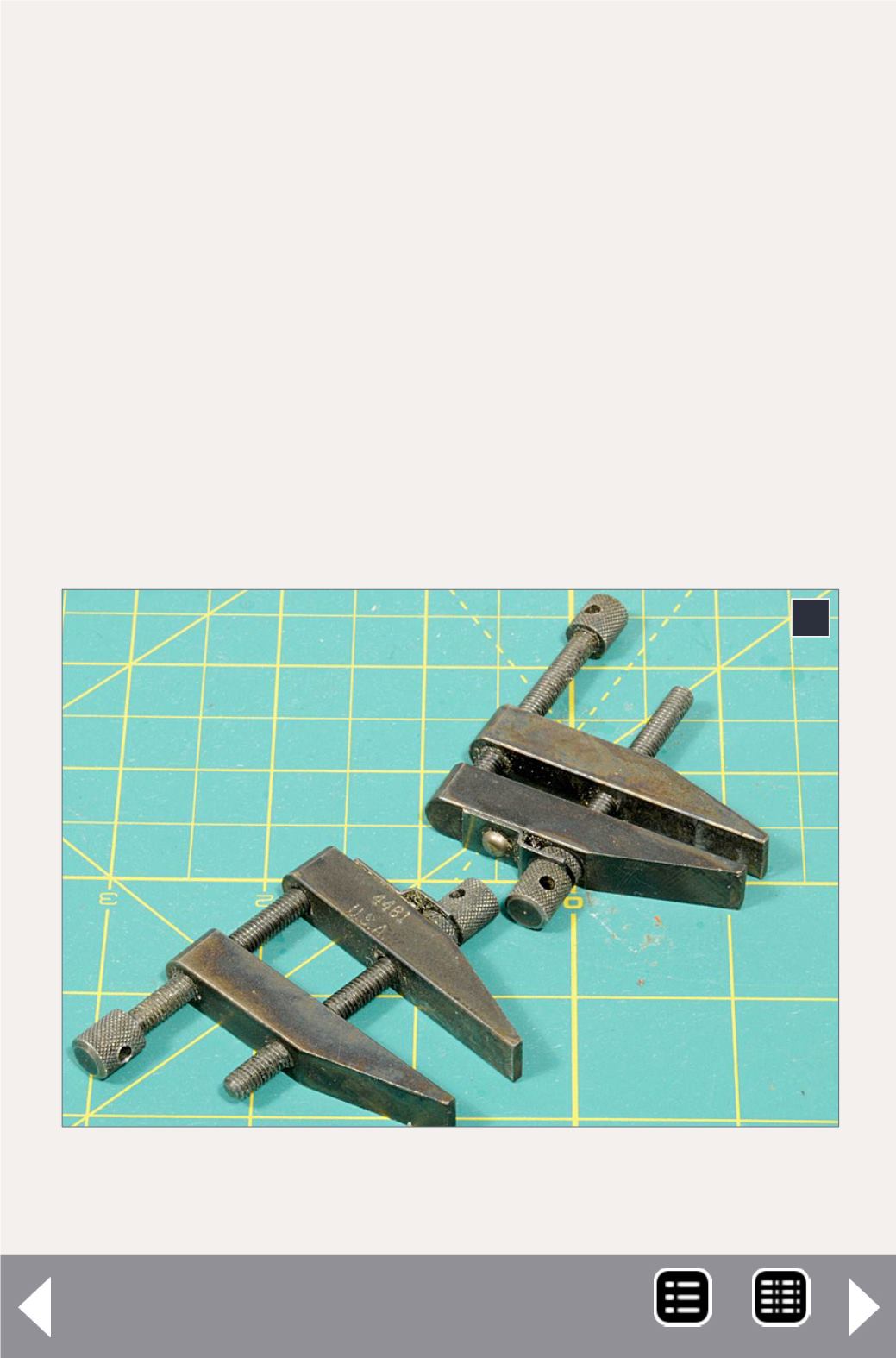
while placing the clamp around the parts and pressing the
sliding jaw up to the assembly. Lock the sliding jaw in place,
and then finish clamping the assembly by tightening the
wing-head thumb screw on the fixed jaw. Since I primarily
scratchbuild with styrene, and don’t build wood laser kits,
my need for this type of clamp is limited.
Machinist clamps (9) are fairly specialized clamps.
Considerable clamping pressure can be applied to an object
by inserting a rod in the hole through the knurled caps on the
screws to increase leverage. They work very well in situations
such as drilling, soldering, or machining, where considerable
pressure is needed to hold the work so it will not move.
I’ve had several different friction clamps over the years such
as the ones in (10), which rely on friction to hold them in
9: The jaws on these machinist clamps are tightened by
turning one screw in while turning the other screw out.
9
The Tool Shed - 5
MRH-Mar 2013


